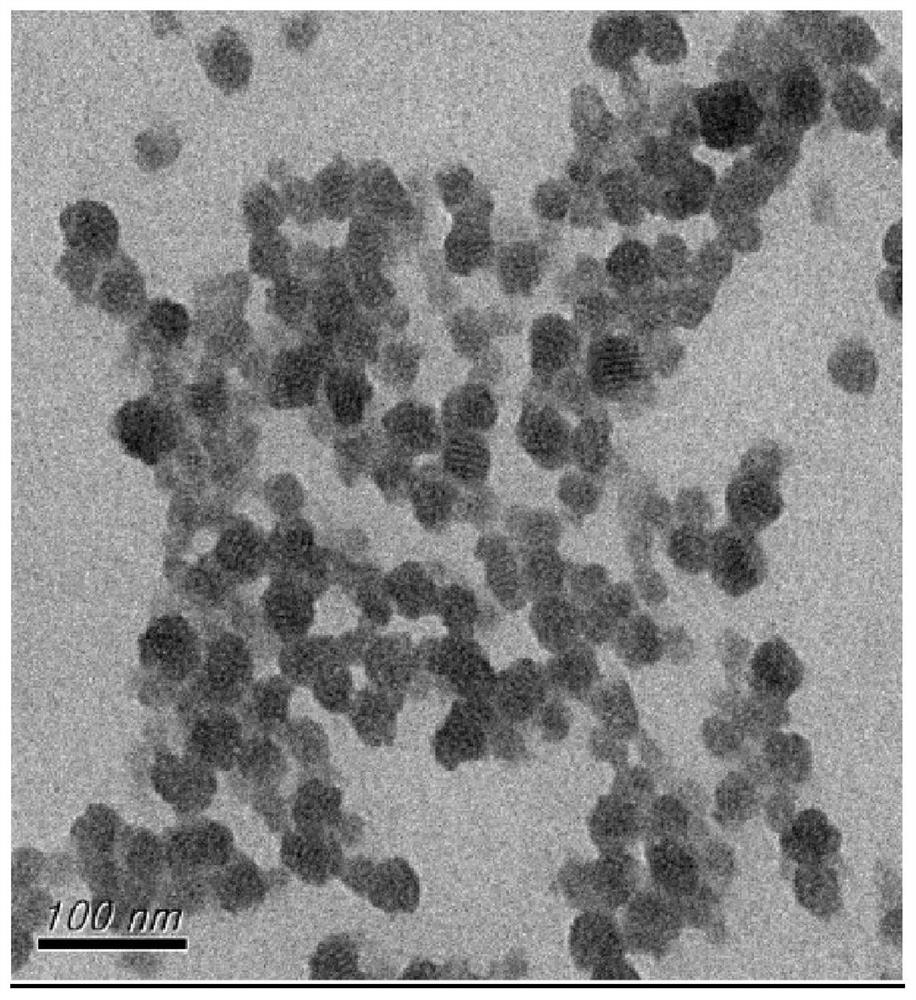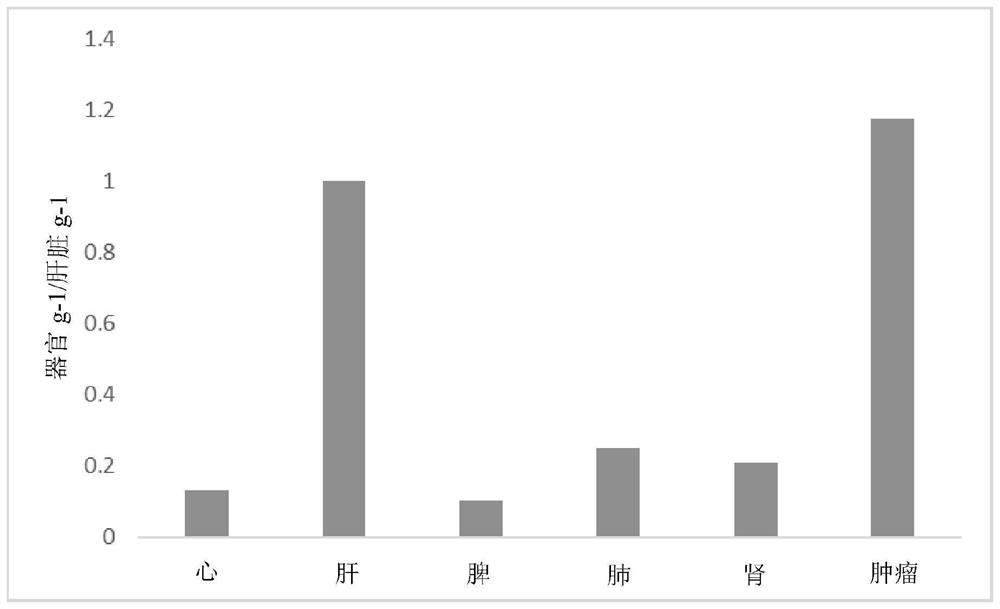Surface-modified mesoporous silica nanoparticles, method for producing same, and use thereof
A technology of mesoporous silica and nanoparticles, applied in nanomedicine, nanotechnology, nanotechnology, etc.
- Summary
- Abstract
- Description
- Claims
- Application Information
AI Technical Summary
Problems solved by technology
Method used
Image
Examples
example 1
[0096] Preparation of mesoporous silica nanoparticles with different ratios of PEG and functional groups on the nanoparticle surface
[0097] Mesoporous silica nanoparticles (MSNs) have a well-defined structure and a high density of surface silanol groups, which can be modified with a variety of organic functional groups. MSNs of different sizes were prepared using an ammonia-base catalyzed method under highly diluted and low surfactant conditions. The particle size was controlled by adjusting the ammonia concentration, the amount of TEOS added and the reaction temperature. Here TA-silane (N-[3-(trimethoxysilyl)propyl]-N,N,N-trimethylammonium chloride) was used as an exemplary charge modulating molecule to impart positive charges to the MSN surface group. Typically, 0.29 g of CTAB was dissolved in 150 mL of ammonium hydroxide solution (0.1-0.2 M) at the desired temperature (50-60 C) in a sealed beaker. After stirring for 15 minutes, the sealing film was removed, and then 2....
example 2
[0099] TEM and DLS measurements
[0100] TEM measurements were carried out on MSNs synthesized as in Example 1, and the results are shown in Figures 1A-1B . The particle diameters and standard deviations thereof are shown in Table 1. TEM results show that the average particle size of 30nm MSNs with various modifications is about 25 to 35nm, while the average particle size of 50nm MSNs with various modifications is about 40 to 60nm, both of which have small standard deviations of particle sizes, This reflects the uniformity of the particles.
[0101] Table 1.
[0102]
[0103] Table 2 shows the particle sizes of MSNs with various modifications measured by dynamic light scattering (DLS) in different solution environments. DLS results showed that all MSNs were well dispersed in the buffer in the range of about 35nm to 45nm or 50nm to 70nm.
[0104] Table 2.
[0105]
[0106]
[0107] Elemental analysis
[0108] During the MSN-PEG+TA synthesis, PEG silane and T...
example 3
[0110] Effect of Surface Charge and Spatial Arrangement of Functional Groups on Biodistribution and Tumor Targeting Ability
[0111] The present invention proves that based on the EPR effect, MSN exhibits excellent tumor targeting ability, and several key determinants should be considered: (1) The particle size is less than 100nm, preferably in the range of about 20nm to 50nm, such as about 30nm (2) The outer surface should be covered by PEG, and any modification should be hidden within the PEG layer; (3) The surface charge and PEG / charge modulating moiety ratio should be limited within a specific range. To evaluate the effect of the spatial arrangement of functional groups on the EPR effect, we synthesized MSNs with similar size and zeta potential but different positively charged molecular lengths or molecular weights. The PEG used for MSN PEGylation was MW 459-591, while the positively charged group used for surface modification was trimethoxysilylpropyl modified polyethyl...
PUM
 Login to View More
Login to View More Abstract
Description
Claims
Application Information
 Login to View More
Login to View More - R&D
- Intellectual Property
- Life Sciences
- Materials
- Tech Scout
- Unparalleled Data Quality
- Higher Quality Content
- 60% Fewer Hallucinations
Browse by: Latest US Patents, China's latest patents, Technical Efficacy Thesaurus, Application Domain, Technology Topic, Popular Technical Reports.
© 2025 PatSnap. All rights reserved.Legal|Privacy policy|Modern Slavery Act Transparency Statement|Sitemap|About US| Contact US: help@patsnap.com



